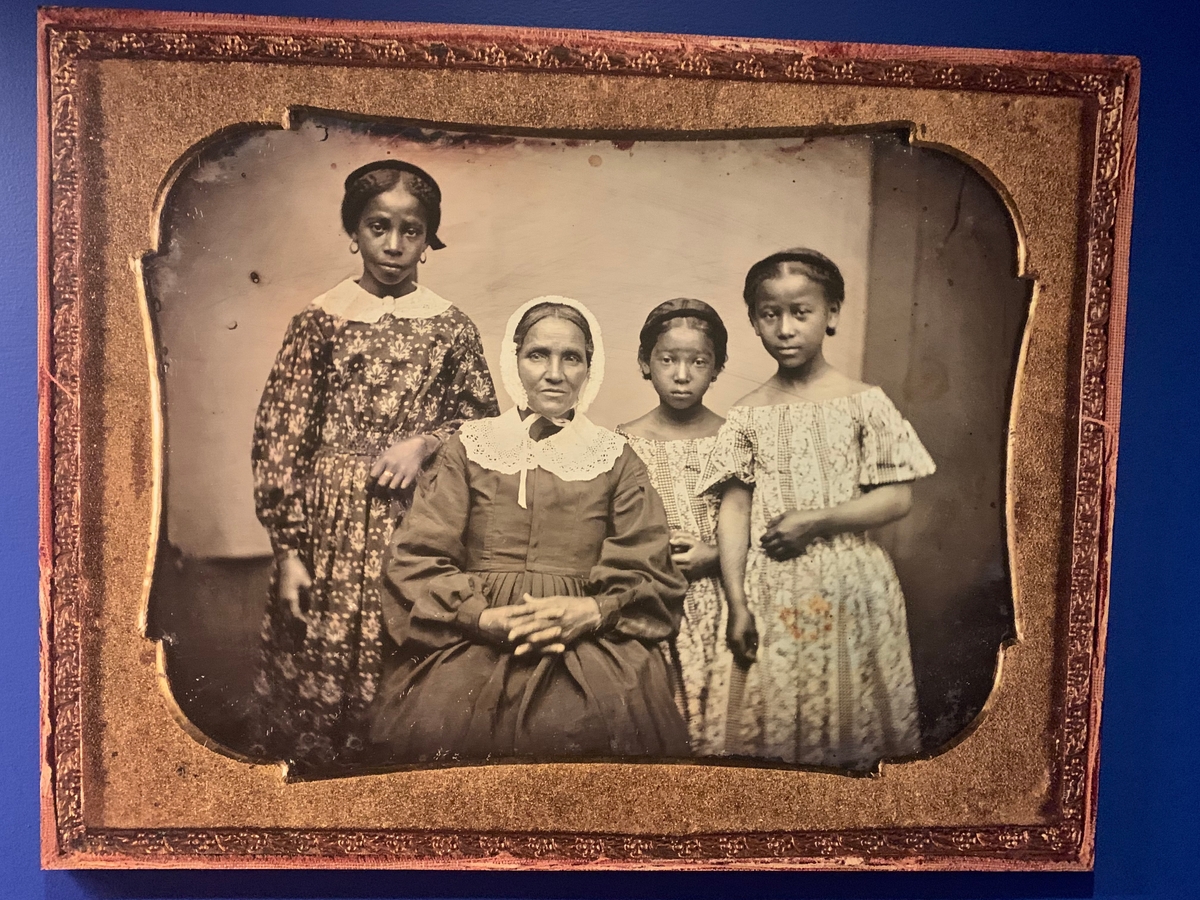Hartford
The Person In The Portrait: Seeing Through Frederick Douglass’ Eyes
by | Aug 4, 2023 9:44 am
Post a Comment | E-mail the Author
Posted to: Visual Art

Jamil Ragland Photo
One of the photos on display at the Wadsworth exhibit.
Frederick Douglass stands next to Harriet Tubman as the only people I describe as heroes. They demonstrated enormous courage even when they didn’t have to. Both had escaped slavery, yet continued to work diligently to destroy that great evil. I’ve read Douglass’ autobiography several times, and devoured almost any book I could find that spoke about him. I wouldn’t call myself an expert, but I was confident I knew a lot about my hero.
Imagine my surprise when I learned not only that Douglass was the most photographed American man of the 19th century, but that he had a deep reverence for the power of photography and the impact it could have on the status of Black Americans. I learned both of these facts from I Am Seen…Therefore I Am, an exhibit of daguerreotype photography currently on display at the Wadsworth Atheneum in Hartford.

The portraits primarily come from the collection of Greg French, who specializes in daguerreotype photography. The portraits were taken by pioneering Black photographers from Douglass’ era, including James Presley (J.P.) Ball of Cincinnati and Augustus Washington, who had a studio in Hartford from 1846 – 1853. The still images are juxtaposed against Sir Isaac Julien’s Lesson of the Hour, a short film that pays homage to Douglass’ life and legacy.


I watched the film for a few minutes, but was immediately drawn back to the photography. I felt that I’d been transported back through time to a land both foreign and familiar: the horrors of chattel slavery still existed in those times, undergirded by the racism and prejudice which endure to this day.

Frederick Douglass.
When I observed the pictures, I couldn’t tell if I was looking at an enslaved person or a free one; if they’d escaped servitude in the South or been born free in the North.
They were just people.
There were few captions for the portraits to describe the people or color my judgment of them. All I could see were the telltale signs of humanity, a person who could be in my place if they were born 150 years later. And I could have easily been in theirs if I was born 150 years earlier.

That’s what Douglass saw when he looked at photography, I think — the ability to strip away context that justified inhumane treatment or words that could be calibrated just so to excuse the inexcusable. There is nothing but the person in those images. It’s hard to face those unblinking eyes. Douglass’ genius was so broad that he understood the power of the person in the portrait before almost anyone else.
Douglass was so moved by photography that he wrote a speech about it, titled “Pictures and Progress.” As I writer I love seeing manuscripts from accomplished writers. But here was something special: my hero speculating about the power of emergent technology. I’ve grappled to understand new technologies of this day, from Snapchat to ChatGPT. I felt a moment of connection with a fellow writer — not an escaped slave, not a world-famous abolitionist, but another writer trying to slam contradictory, incoherent ideas into something worth reading.
In the end I was drawn to Douglass’ words as I always have been, but his perspective on portraits has made me reevaluate my own. I haven’t avoided pictures, but I have generally shunned taking pictures in important moments because I felt it was a distraction. That’s something I intend to change, because I want people now and in the future to always remember that the person in the portrait is a person too.
Still up: I Am Seen…Therefore I Am: Isaac Julien and Frederick Douglass is being shown at the Wadsworth Atheneum Museum of Art through Sept. 24.
NEXT: Jamil checks out some music at high noon at the Old State House in Downtown Hartford.
What’s the review crew? Click here and here.